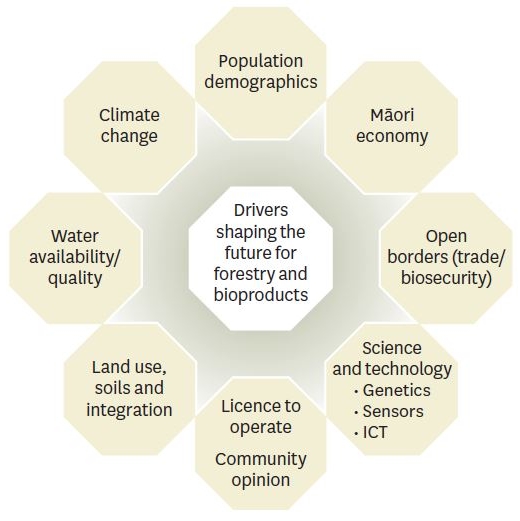Biosecurity a top priority for the forest industry and Scion
Biosecurity is the forest owners’ top priority. Keeping trees green and healthy, and the products from these able to be sold in export markets, dominates all other considerations. Trees are forest owners’ primary revenue generator and a liquid asset - if they are afflicted by pests and diseases or are restricted in their access to market, their value is seriously diminished.
Scion has built up one of the world’s leading forest biosecurity teams over many years. Ably led by Science Leader Lindsay Bulman, the Forest Protection Team works very closely with industry, farm foresters and the Ministry for Primary Industries (MPI) to ensure the key issues are addressed in an efficient and collaborative manner. Our capability is enhanced by working closely with New Zealand colleagues via Better Border Biosecurity (B3)1 and the New Zealand Biological Heritage National Science Challenge2.
Scion’s substantial worldwide network of biosecurity researchers is also extremely valuable in supporting our New Zealand efforts, and conversely, Scion is often requested to assist other countries with their forest biosecurity problems. This open and dynamic flow of ideas and methods, and exchanges of science and technical staff has built up a strong global forest biosecurity community that we can call on at any time to help the New Zealand forest industry meet biosecurity and market access challenges.
The mega trends shaping the future of the New Zealand forest industry – distilled in the diagram below – will all impact the biosecurity of New Zealand forests and our ability to undertake export trade.

Climate change through different weather patterns – drier, wetter, windier and warmer depending on the district – is shifting the bounds and movement patterns of pests, diseases and weeds. Pests are appearing where they previously did not, and Pinus radiata is more prone to a biosecurity challenge when suffering from water stress than under normal circumstances. Our biosecurity science has to “front foot” the multiple challenges posed by climate change through tree breeding, developing alternative species and improving surveillance and earlier detection.
The forecast increase in tourists to four million per year by 2020, one million more than present levels, combined with more New Zealanders moving to and from countries, elevates the likelihood of an unwanted organism being introduced into New Zealand. As well, our large coastline is relatively unprotected from small boats from other jurisdictions landing without being subjected to custom checks.
Biosecurity threats are not confined to exotic plantation forests; they also pose threats to indigenous species and this is of great concern to iwi. For example, myrtle rust being blown across the Tasman and infecting the Myrtaceae species (which includes manuka, pohutukawa and rata) may have a serious impact on our burgeoning honey industry and iconic flowering natives.
With this context in mind, MPI’s consultation on Biosecurity 2025 is very timely. Scion fully supports MPI’s aspirations (‘A biosecurity team of 4.7 million’) to make biosecurity the responsibility of all New Zealanders and to ensure we maintain a strong, coordinated science and innovation capability that can address today’s issues as well as those likely to arise in the future. The Boy Scout motto “be prepared” applies.
You can read about Scion’s work on biosecurity on our website and the direction of our science programme in our Statement of Corporate Intent3. As well I would encourage you to look at the forest growers’ biosecurity research priorities4.
As always I welcome your comments on this topic or any of the other matters raised in this edition of Scion Connections.


Dr Warren Parker
Chief Executive
1 See http://b3nz.org
2 See http://www.biologicalheritage.nz
3 http://www.scionresearch.com/sci
4 In particular, HTHF (Phytophthora) and NDS (Needle Disease Strategy) at https://fgr.nz/programmes/forest-health/nds-needle-disease-strategy-programme/nds-technical-reports/
